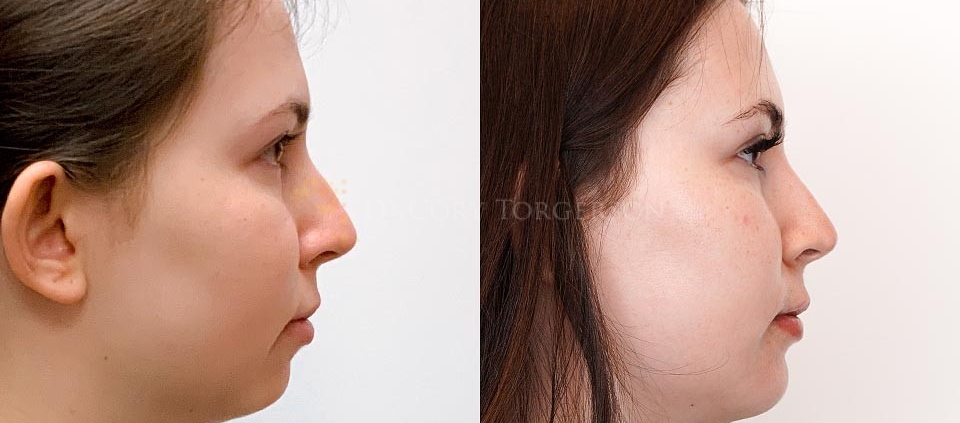Chin Implants vs. Dermal Fillers: Which Option is Best for Jawline Enhancement?
A well-defined jawline can transform the overall balance of the face and add confidence to one’s appearance. Today, people have more options than ever before to achieve this. Chin implants and dermal fillers both play a role in jawline enhancement.
Choosing between these two treatments can feel confusing. Each has unique advantages and limitations, depending on your facial structure, budget, and expectations. Understanding how they differ, from procedure details to recovery and long-term outcomes, helps people make an informed decision that suits their goals.
What Are Chin Implants?
Chin implants are small medical devices, usually made of silicone, designed to improve the projection and shape of the chin. They are placed through a short surgical procedure, where the implant is inserted into a pocket near the bone. This option is best suited for people with a weak or recessed chin who want permanent improvement.
Because the implant integrates with the facial structure, the results are long-lasting and do not require regular maintenance. For many, a chin implant in Toronto offers a stable solution when they want a stronger jawline and better profile balance.
What Are Dermal Fillers?
Dermal fillers are injectable gels, most commonly made of hyaluronic acid, that add temporary volume under the skin. For the jawline and chin, fillers can create subtle projection and improve contour without surgery. The treatment usually takes less than an hour and has minimal downtime.
Fillers are ideal for individuals who want to “test out” what chin enhancement looks like before committing to surgery. They are also suitable for patients who want smaller changes or prefer a non-invasive approach. However, since fillers dissolve naturally, results usually last 9 to 18 months before retreatment is required.
Comparing the Procedures
Chin Implants
- Surgical placement through a hidden incision, often under the chin.
- Performed with anesthesia for comfort.
- Recovery takes about one week, with swelling that settles gradually.
- Results are permanent unless the implant is removed or replaced.
Dermal Fillers
- Injection technique using a fine needle or cannula.
- No need for general anesthesia, just topical numbing if needed.
- Mild swelling or bruising may occur, but downtime is minimal.
- Results are temporary and require regular upkeep.
Costs and Longevity
When comparing the financial aspect, chin implants usually have a higher initial cost. However, since the results last indefinitely, they can be more cost-effective over time. Dermal fillers, on the other hand, have a lower upfront cost but require repeat treatments, which can add up over the years.
Patients should weigh short-term affordability against long-term investment. A permanent implant may be worthwhile for those seeking a one-time solution, while fillers can be practical for those unsure about committing to surgery.
Aesthetic Results and Natural Look
Chin implants provide a strong, stable result that dramatically reshapes the lower face. They are particularly effective for correcting significant asymmetry or a weak chin. The implant is carefully selected to match facial proportions, so the improvement looks natural.
Dermal fillers, by contrast, offer flexibility. Because they are injectable, adjustments can be made gradually over several sessions. If a patient dislikes the results, hyaluronic acid fillers can often be dissolved. This reversibility makes fillers a safer starting point for hesitant individuals.
Risks and Considerations
Every treatment comes with potential risks. With chin implants, the concerns include infection, shifting of the implant, or dissatisfaction with the final look. Surgical risks are managed by proper planning and an experienced surgeon.
For dermal fillers, risks include swelling, bruising, lumps, or uneven results. In rare cases, complications may occur if filler is injected into a blood vessel. Choosing a skilled medical professional reduces these risks. Patients should also be realistic about what each option can achieve.
When to Consider Other Procedures
Sometimes jawline enhancement is part of a broader plan. People considering a facelift in Toronto may combine it with chin augmentation to improve overall definition. Similarly, patients interested in eyelid surgery in Toronto might benefit from balancing their entire face for a younger, fresher look. A consultation with a qualified surgeon can help determine whether chin enhancement alone is enough or whether additional procedures would achieve better harmony.
Final Thoughts
Both chin implants and dermal fillers are effective ways to enhance the jawline, but the right choice depends on your personal goals. Implants give lasting results with one procedure, while fillers provide flexibility and reversibility for those seeking gradual change.
The decision should be made after a careful consultation and clear understanding of risks, benefits, and expected results. A skilled surgeon, such as Dr. Cory Torgerson, can guide patients through this process, ensuring the selected option aligns with their features and long-term vision.




Leave a Reply
Want to join the discussion?Feel free to contribute!